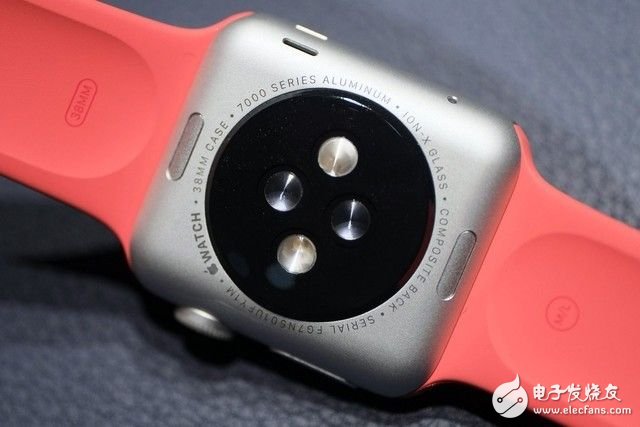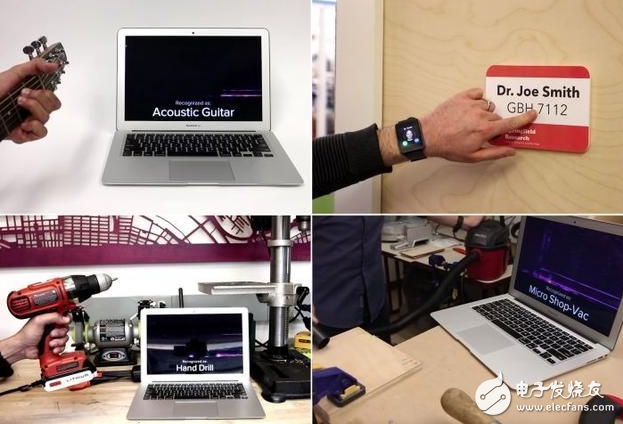We all know that the motion monitoring function of smart wearable devices is mainly realized by gravity acceleration sensors. Gravity sensors are a very mature technology, and mobile phones have long been used. The sensor obtains some basic data by judging the movement of the person's movement, and combined with the basic information of the personal body signs previously input by the user, according to some specific algorithms, obtain personalized monitoring data for the individual, such as the number of movement steps, the distance, and the calories burned. To determine the frequency and intensity of the movement.
Sleep monitoring is also achieved through the same sensor technology. When people are in different stages of sleep, brain waves will change rapidly. Interestingly, gravity acceleration sensors do not have the function of directly detecting brain waves, so it is the measure of the magnitude and frequency of people's movements during sleep. To determine which stage sleep is, Apple's Apple Watch's alarm function is based on this judgment that the user is in the "quick eye" period to wake up the user.

However, the gravity sensor of the existing products can only reach the maximum extent here. Since the sensing speed of the sensor limits the recognition degree, they cannot recognize more, such as what gesture the user makes, whether the palm is up or the back of the hand is upward.
On the other hand, in heart rate monitoring, Apple Watch (including Gear Fit, Fitbit Surge, Microsoft Band and other bracelets) uses a photoelectric heart rate meter, its principle is very simple - through the green LED lights on the back of the Apple Watch, When the blood is red, it can reflect red light and absorb green light. When the heart beats, the blood flow increases, the absorption of green light will increase, and the heart beats. At the time of the gap, the blood flow is reduced, and the absorbed green light is also reduced. Based on this, the heart rate can be measured based on the absorbance of the blood.

The working principle of the photoelectric sensor requires that the device be close to the wrist, and the hair should not be too strong, can not sweat, and can not be measured during exercise. This is why Apple will advise users to keep their watches close to the skin during heart rate monitoring. In addition, Apple also said that in the cold weather, the blood flow of the user's wrist may not be enough to monitor the heart rate, and When users are performing rate-based exercises (such as running and cycling), the accuracy of heart rate measurement is more accurate than random motion (such as playing tennis). These are also limitations of photoelectric heart rate monitoring.
Since the blood flow rate has actually slowed down as blood flows into the wrist through the capillaries, the final result does not necessarily reflect the heart rate—that is, the heart rate data monitored using the Apple Watch may not be as good as some. The phone is accurate, especially in the case of a hand-held machine, since the index finger of the person has an arterial blood vessel, and the latter can maintain the same frequency as the heart.
Let the sensing be more refined The future of human tracking can be used to make the data of the wearable device accurate. This is the problem that countless smart wearable products want to solve.
For now, the most practical solutions are two, one is to add more sensors, the other is to develop better sensors and more advanced algorithms. For the former, the more sensors, the more sensors Can bring more comprehensive monitoring results, but it will also cause equipment size and battery life. For technical reasons, the development of sensors still has a long way to go. Non-implantable electrochemical and biosensors are the main evolutionary direction. But the leading R&D team has found the starting point for optimizing the sensor – boosting the sensor.
In October of this year, Weifeng.com reported that researchers at Carnegie Mellon University have developed a system called ViBand that allows existing smart watches to recognize user gestures and identify objects on the user's hand. news.

The role of the Viband system is to pressurize the accelerometer sensor of a typical smart watch - to put it bluntly, it is to "snap the chicken blood" to the sensor, so that it can sense small changes in the incredible vibration frequency. It can sense not only the buzzing of the engine while it is running, but also the tuning of the guitar, or the apparent slight difference caused by the user moving the arm in different ways.
According to reports, the secret of the Viband system lies in the specifications of the accelerometer sensor itself. Generally speaking, the accelerometer in the watch is set to perform 20 to 100 samples per second to meet the measurement requirements of the watch for the motion track. Using a software update, the researchers increased the detection frequency to 4,000 times per second and used the accelerometer as a vibrating microphone. In other words, it can also monitor the bioacoustic signals emitted by the user's body.
Displacement sensor, also known as linear sensor, is a linear device belonging to metal induction. The function of the sensor is to convert various measured physical quantities into electricity. In the production process, the measurement of displacement is generally divided into measuring the physical size and mechanical displacement. According to the different forms of the measured variable, the displacement sensor can be divided into two types: analog and digital. The analog type can be divided into two types: physical property type and structural type. Commonly used displacement sensors are mostly analog structures, including potentiometer-type displacement sensors, inductive displacement sensors, self-aligning machines, capacitive displacement sensors, eddy current displacement sensors, Hall-type displacement sensors, etc. An important advantage of the digital displacement sensor is that it is convenient to send the signal directly into the computer system. This kind of sensor is developing rapidly, and its application is increasingly widespread.
Displacement Transducer,Linear Displacement Transducer,Linear Variable Differential Transducer,Linear Variable Displacement Transducer
Changchun Guangxing Sensing Technology Co.LTD , https://www.gx-encoder.com